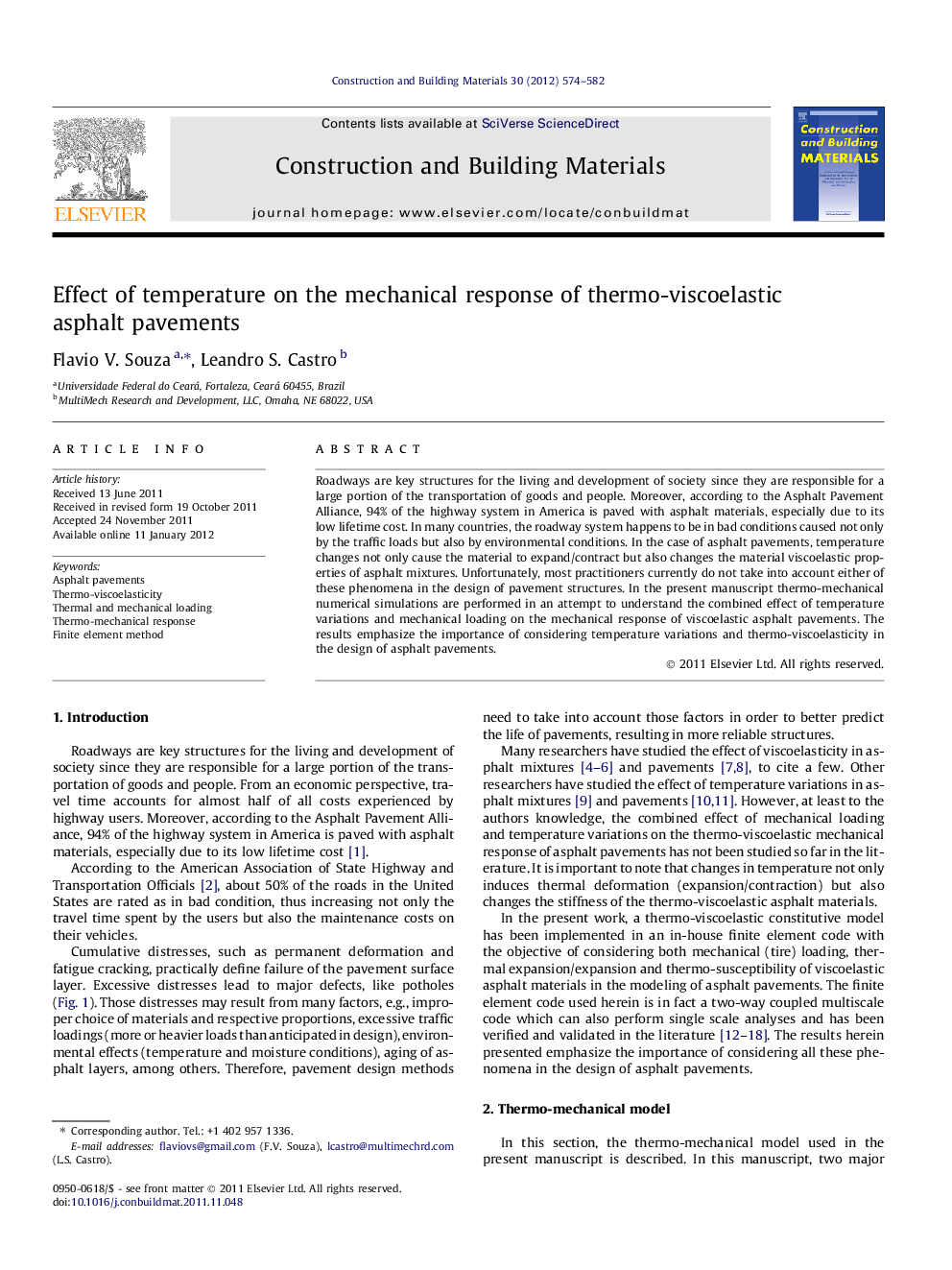| Article ID | Journal | Published Year | Pages | File Type |
|---|---|---|---|---|
| 258558 | Construction and Building Materials | 2012 | 9 Pages |
Roadways are key structures for the living and development of society since they are responsible for a large portion of the transportation of goods and people. Moreover, according to the Asphalt Pavement Alliance, 94% of the highway system in America is paved with asphalt materials, especially due to its low lifetime cost. In many countries, the roadway system happens to be in bad conditions caused not only by the traffic loads but also by environmental conditions. In the case of asphalt pavements, temperature changes not only cause the material to expand/contract but also changes the material viscoelastic properties of asphalt mixtures. Unfortunately, most practitioners currently do not take into account either of these phenomena in the design of pavement structures. In the present manuscript thermo-mechanical numerical simulations are performed in an attempt to understand the combined effect of temperature variations and mechanical loading on the mechanical response of viscoelastic asphalt pavements. The results emphasize the importance of considering temperature variations and thermo-viscoelasticity in the design of asphalt pavements.
► Thermal expansion and thermal stiffening/softening of asphalt layer are considered. ► Thermal effects may increase maximum compressive stress on subgrade. ► Thermal effects may increase peak tensile stress in asphalt layer. ► Energy dissipated per load cycle is greatly affected by temperature. ► Accurate modeling of thermal effects can reduce errors in life predictions.
